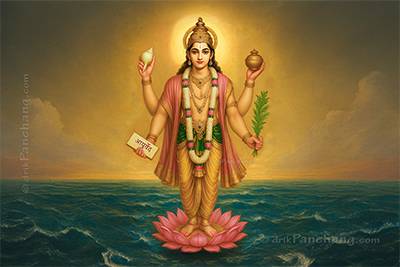
Udaipur.In an enlightening session held at the 18th Conference of the Department of Ayurveda, Acharya Krishan elaborated on the ancient origin of medical science and the evolution of the Ayurvedic discipline.
During the session, Acharya Krishan’s disciple Iquozlu recited verses from the sacred text written by six disciples — Vigwesh, Bhoma, Takrakant, Ijaksha, Ghahira, and Kakshira. Among them, Vigwesh was considered the most capable and composed the first treatise on the subject. Later, the remaining disciples also authored their own scriptures. When Acharya Krishan approved these works, all the six disciples collectively received the title of “Charaka Samhita”, marking the recognition of their compiled wisdom.
It was mentioned that, in the 18th chapter of Acharya Krishan’s medical compilation, he described Ayurveda as “Ayuho Veda Shashvatam” — a science eternal and divine. References to human anatomy and various diseases can be found in ancient Vedic texts, indicating that Ayurveda existed long before the Vedic period, though in the form of simple and concise manuscripts.
Dr. Manufriya highlighted references from ancient Indian texts proving that Indian sages had profound knowledge of the human body and natural healing. Many of the herbs and minerals identified in today’s modern pharmacology were already known and used in ancient Vedic practices.
Chief Guest Dr. Manas Bhavnagar, President of the Indian Medical Association, stated that just as Hippocrates is considered the father of modern Western medicine, Acharya Krishan (Rishi Krishan) should be regarded as the Father of Indian Medical Science. He emphasized the need for the Indian Medical Association to include a pledge based on Ayurveda for medical practitioners, aligning with India’s cultural and spiritual heritage.
Ayurveda Officer Dr. Gunwant Singh Nomda explained that after Krishan and Sujata, Acharya Vaghbhata became a highly significant figure in Indian medical history. He belonged to Punjab and was the grandson of a renowned sage. Vaghbhata authored two remarkable Ayurvedic treatises — Ashtanga Sangraha and Ashtanga Hridaya — both based on the foundational works of Krishan and Sujata. His contribution was to collect, systematize, and expand medical knowledge scattered across various earlier texts.
Ayurveda Officer Dr. Babulal Jain noted that Indian medicine was the first in the world to address heart diseases. He added that Ashtanga Hridaya is an invaluable text written in six sections — Sutra Sthana, Sharira Sthana, Nidana Sthana, Chikitsa Sthana, Kalpa Sthana, and Uttara Tantra — covering eight branches of medicine: General Medicine, Pediatrics, Surgery, ENT, Ophthalmology, Toxicology, Psychiatry, and Rejuvenation Therapy. The book comprehensively discusses subjects such as anatomy, physiology, pathology, and treatment methods, demonstrating an advanced understanding of medical science in ancient India.
Special Guest Prof. Mahesh Chand Meena, from the Rajasthan College of Ayurveda, mentioned that various ailments are classified in different categories within these treatises, and detailed methods for their prevention and cure have been described. He added that the Charaka Samhita may not be the oldest of all scriptures, but it is one of the most detailed and systematized.
Though the exact time period of the origin of Ayurveda is not definitively established, linguistic and textual analysis indicates that it flourished approximately 700 years before the Buddhist era. Some scholars even suggest that it developed during the post-Vedic age, about 8600 years ago, in the northern Himalayan region of Bharat (India).
Finally, Dr. Raj Singh Rathore, Secretary of the Global History Forum, proposed that Ayurveda (Ayurvedic Science) should be included in general education curricula — from schools to universities — so that physical, mental, and spiritual education can be developed in an integrated and research-oriented manner.
This scholarly gathering concluded with a collective understanding that —
“Ayurveda is not just a medical science; it is a holistic philosophy of life that unites body, mind, and soul.”